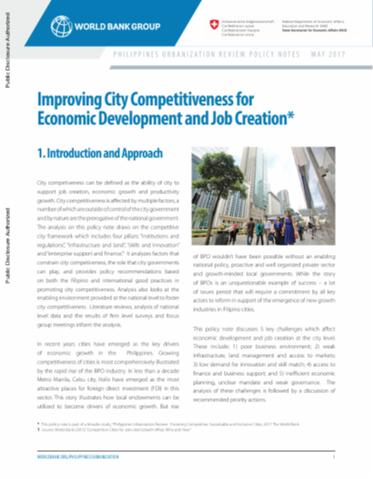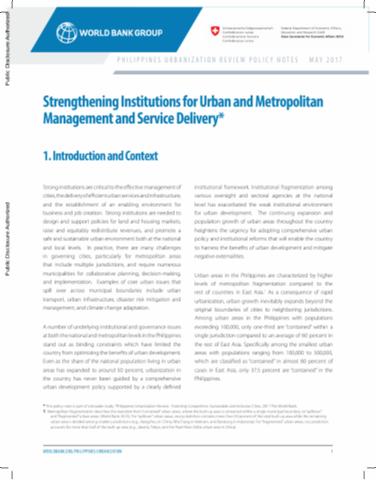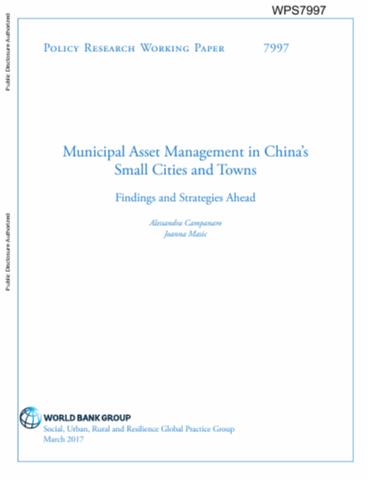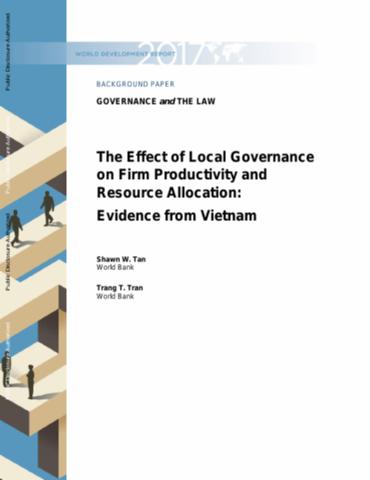This policy note presents an analysis of and recommendations on the city competitiveness improvement and is part of a broader Philippines urbanization study. The analysis draws on the competitive city framework which includes four pillars: 1. institutions and regulations; 2. infrastructure and…
This policy note presents an analysis of and recommendations on the city competitiveness improvement and is part of a broader Philippines urbanization study. The analysis draws on the competitive city framework which includes four pillars: 1. institutions and regulations; 2. infrastructure and…
This policy note assesses the performance of existing land administration and management (LAM) system in the Philippines in creating an environment for competitive cities. It looks at the influence of LAM (including property rights) in the proper functioning of land markets in urban areas; the…
This policy note assesses the performance of existing land administration and management (LAM) system in the Philippines in creating an environment for competitive cities. It looks at the influence of LAM (including property rights) in the proper functioning of land markets in urban areas; the…
This policy note discusses strengthening institutions for urban and metropolitan management and service delivery and is part of a broader Philippines urbanization study. Strong institutions are critical to the effective management of cities, the delivery of efficient urban services and…
This policy note discusses strengthening institutions for urban and metropolitan management and service delivery and is part of a broader Philippines urbanization study. Strong institutions are critical to the effective management of cities, the delivery of efficient urban services and…
Chinese municipalities have developed a large stock of capital assets during a period of rapid growth and urbanization, but have yet to modernize asset management practices. Cities face challenges such as premature decline of fixed assets and spiking liabilities related to operating and…
Chinese municipalities have developed a large stock of capital assets during a period of rapid growth and urbanization, but have yet to modernize asset management practices. Cities face challenges such as premature decline of fixed assets and spiking liabilities related to operating and…
Urbanization is a driving force for growth and poverty reduction. Globally, over 80 percent of economic activity is concentrated in cities, and cities are essential for lifting millions of people out of poverty through the opportunities that density and agglomeration can bring with jobs,…
Urbanization is a driving force for growth and poverty reduction. Globally, over 80 percent of economic activity is concentrated in cities, and cities are essential for lifting millions of people out of poverty through the opportunities that density and agglomeration can bring with jobs,…
Governance quality plays a key role in private sector development: competent bureaucrats not only create good policies and regulations but also effectively implement them to shape the business environment. The authors exploit Vietnam’s decentralization of administrative tasks since the early…
Governance quality plays a key role in private sector development: competent bureaucrats not only create good policies and regulations but also effectively implement them to shape the business environment. The authors exploit Vietnam’s decentralization of administrative tasks since the early…






